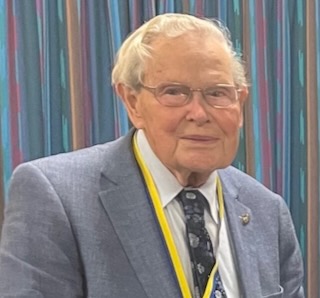
"The devil is in the detail", but so is the interest. Most of us know someone who has had to get their cataracts "done" but few of us had appreciated how much modern surgery has advanced. Even fewer would have heard of Harold Wrigley and how he transformed the process of "doing". Before modern surgery nothing could be done when a person developed cataracts. As recently as 1950 cataract operations became possible but would still involve the patient (or victim) going to the hospital the day before surgery, fasting and then having a general anaesthetic the operation, and spending seven days lying on their back, blindfold and waiting a further three months before having appropriate glasses prescribed.
Harold Wrigley, an aye surgeon at St Thomas' Hospital in London was dealing with two patients who had splinters of perspex in their eyes. He observed that although they had penetrated the eye these splinters had not caused further damage as foreign bodies in eyes always had done. He picked up on a suggestion from a young registrar that perhaps new lenses could be made from perspex and inserted in the eye. Years of experiment and incremental improvement made it possible to make, and fit, new lenses. Subsequently techniques were improved until it became possible to remove the old lens and replace it with a new one through a tiny, 2.5mm incision. Using such a tiny incision meant that stitches no longer had to be used to sew it up and the whole operation was far less traumatic. As a result Colin had been able to walk to Boulcott Hospital, have the operation and the next day resume normal life. That experience led to this talk and our appreciation of just how amazing modern medicine has become. Thank you Colin.